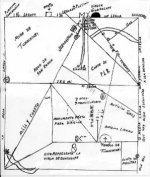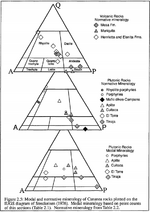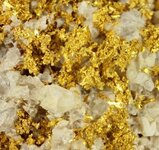cactusjumper
Gold Member
Don't believe the King's men were looking for church "ornaments".
Good luck,
Joe
Good luck,
Joe
Well the expulsion order from the King mentions that he has "reasons" that he chooses to keep "in his royal mind" rather than make public, so we can never know the full story. As to the legitimacy of the king, was it reasonable for the Jesuits to get thus involved in politics? Shouldn't they have supported the king, and not raised issues of his birthright?
Side thing but I could not get any of the links in your last post to work, not sure what the issue is?
Please do continue,
Oroblanco




Don't believe the King's men were looking for church "ornaments".
Good luck,
Joe
"all troops, militia or civilian, shall render the necessary assistance (in expelling the Jesuits), without any delay or evasion."
All the orders to be dispatched at home and abroad were sealed in envelopes and instructions were sent that no envelope was to opened under pain of death until the evening of April 2, 1767
The Jesuit order entered Sonora and the Mayo country in 1613; by 1617 the Yaquis also wished to know more about the new techniques. They too were interested in such innovations as cattle, horses, fruit trees, and other temporal benefits. In the bargain, these people were converted to Christianity. By 1620 the Jesuits had moved their frontier into central Sonora, and the conquest of Sonora by Spain seemed assured. A conflict in jurisdictions occurred between 1635 and 1644, again slowing for a time the movement north. Pedro de Perea had managed to become governor of Sonora, with the provision that he established a colony there. Taking disappointed colonists from New Mexico who had not been provided with all the anticipated benefits of the overlordship of New Mexico, which had only begun as a Spanish colony in 1598, Perea moved with a few Spanish and mestizo families into Sonora, establishing himself at Tuape. He brought Franciscan missionaries with him to northern Sonora, which was the cause of some irritation to the Jesuits, who had regarded Sonora as their field of endeavor. After a five-year period, he viceroy felt that Perea was lagging in his efforts to colonize the area, so his governing of Sonora was ordered terminated. He had already died however. In 1644 the Jesuits were able to assume control of the missions in northern Sonora established by the Franciscans, and the Franciscans withdrew.
https://www.scgsgenealogy.com/free/media/los-angeles-under-the-spanish-flag-wmason.pdf
Yet, we find in the royal decree, the following phrase:
This is in curious contrast to the facts we know:
Once opened, the governors and members of the Spanish milita found that they were to summarily and quickly eject the Jesuits on the night of June 25, 1767.
Prior to opening the sealed orders, only four men of the Extraordinary Council for King Charles III knew of the content of these letters in addition to the king, himself.
So why the hurry up and wait? Why the extreme stealth? Why were the Jesuits not simply ejected outright, as soon as the Extraordinary Council reached their conclusion?
deducer,
I don't see how your reply addressed my post. I admit to being somewhat dim these days, so perhaps you could explain how it was related to what I wrote.
Thanks,
Joe
Don't believe the King's men were looking for church "ornaments".
Now the treasure hunt began. Every corner was searched in vain. Practically all bricks were torn loose from the floor of the procuratory; but no subterranean vaults were revealed. The garden was dug up, but neither buried jars nor chests were unearthed. Walls were tapped inside and out and as soon as the sound seemed to reveal a space it was broken in, but no sealed coin repositories were found.
Finally, it occurred to these miners that perhaps the treasure was buried in the locis secretis, and that possibly the cesspool had become a gold mine. The inventor of this idea, the conceited finance_minister, remarked that now he had it figured out, and his crafty thought was applauded. Immediately were fetched ropes and cords, lanterns, and ladders. Fervet opus. The new miners made their first test, bravely lowering themselves well_secured into the shaft. Poles and sticks were lowered to them to serve as divining rods for searching through everything, so that nothing be left unprobed. They stirred and stirred until the chief overseers and inspectors almost swooned from the rising mercurio volatili and had no strength left either to halt or to spur on the miners in the shaft.

To be more precise: Gold and silver ingots/bars, gold or silver coins, precious stones..........treasure, in any manner you can dream of it.
Wouldn't this also include church ornaments?
deducer,
I believe they were looking for hidden treasure, not stuff the priests were using out in the open.
Good luck,
Joe


deducer,
I believe they were looking for hidden treasure, not stuff the priests were using out in the open.
Good luck,
Joe
Are you saying they would have passed up grabbing a church ornament standing in the open, in favor of searching cesspools and disturbing caskets?
Not to butt into this point of debate, but how would you class a solid silver statue of the virgin Mary of say, five pounds weight? I am sure this would be called a "church ornament" by the Jesuits, and yet might be the type of thing hidden, and would certainly be worth a good deal of money even if just melted for the bullion. One such example was only recently mentioned in this very thread. Do you hold that the Spanish authorities searching in Mexico city (where such searches were most energetic) would not have looked for this type of "church ornament" as a hidden treasure, especially if hidden away? Thanks in advance;
Roy
Please do continue,






I didn't think I needed to state the obvious.